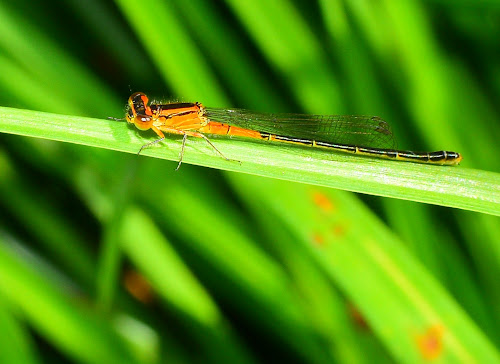What the eye does not see, the heart does not grieve over. Beware my advice to explore your backyard. Be forewarned close observations may astonish you, make you laugh, make you cringe, maybe even make you a voyeur of insects. Observations of wildlife in your backyard may swell your heart with joy, and at times cause your heart to grieve - for the decreasing species that you observe.
My intent this summer was to capture images of as many insect species as I could on our one-acre yard here in Jericho, Vermont. Over the last few years, we have planted many Vermont native shrubs and trees that support caterpillars, beneficial insects, birds, and other species. My theory is, the diversity if not the quantity of beneficial insects in the yard will increase as the native plants become established and provide food, and host plant sites.
What I have observed is well beyond just some species. I have discovered an art gallery of colors, patterns, shapes, as well as a kaleidoscope of behaviors that have entertained me, opened my imagination, and often left me awestruck. Before this closer look, I had little idea of what life that we share this land with, look like.
My concern for pollinators is not new. Now my interest is expanded to all beneficial insects; most insects indeed are beneficial to us. However, to say I might relate to an insect or feel for one like I might a pet dog or cat might sound like a stretch. Until I looked a Dragonfly in the eye.
This twelve-spotted skimmer's compound eyes make it look as though it is wearing a monocle. The complexity of this order of insects called Odonata (Dragonflies and damselflies) is impressive. And unlike many other insect groups, the Odanta have changed little in body design since ancient times. The Odonata vary in coloration and many have brilliant patterns.* They are voracious predators. I have watched individuals catch prey, and munch away as unedible parts drift off in the breeze. I swear I could just about hear the munching and chewing.Below are a few of the many Odonata I observed in our yard this summer.




Beyond exploring your own backyard, consider any of the following.
- Photograph what you observe and load the photo onto iNaturalist. The process is very easy, usually takes less than a minute, aids science, and provides you the likely name of your observed species is.
- View my Jericho project of posts (over 200 insect species viewed in our backyard this summer) on iNaturalist at https://www.inaturalist.org/projects/jericho-vt
- Join the Jericho Conservation Commission Bioblitz, Sept 12-26. Read more at bioblitz
What is a Bioblitz? A bioblitz is a community science effort to record as many species as possible within a designated location and time period, in this case, our own backyard treasure - Mobbs Farm.
- Plant Vermont Native shrubs, trees, and other native plants to support the web of life including pollinators. I have created a spreadsheet listing all of the Vermont Native Plants and information about each of them. Happy to email the spreadsheet to anyone who would like a copy. Now working on a beneficial insect and the plants that attract them list.
- Consider reducing your lawn size. Benefits our native species and gives you more free time (less lawn care), and allows a wider diversity and perhaps more interesting vegetation for you to view. We find mowing only paths through the yard works great for us.
Go ahead - look a dragonfly or darner in the eye. Be prepared for a good look back.

How do I post an observation on iNaturalist?
It is easy to download the app to your smartphone and then after you have created an account, begin adding observations. Click here to view a tutorial.
Emailed comments received.
Love this, Bernie. What a great informative read. You may already know this, but I recently learned that prehistoric dragonflies grew to about 3’ wide due to an atmosphere abundant with oxygen. The high oxygen saturation (30-35%, today we are around 20%) made everything grow big.
Hope you’re enjoying this beautiful day, thanks for posting!
Best,
Cristine Selvidio
Wow Christine, 3' wide, I definitely would not want to look them in the eye! Bernie
Loved your dragonfly story. Thank you
Linda Nadeau
We have a three-acre plot that I'm affectionately recently calling The Three Acre Farm after 25 years and I too enjoy the variety of biomes! ~Kate















No comments:
Post a Comment